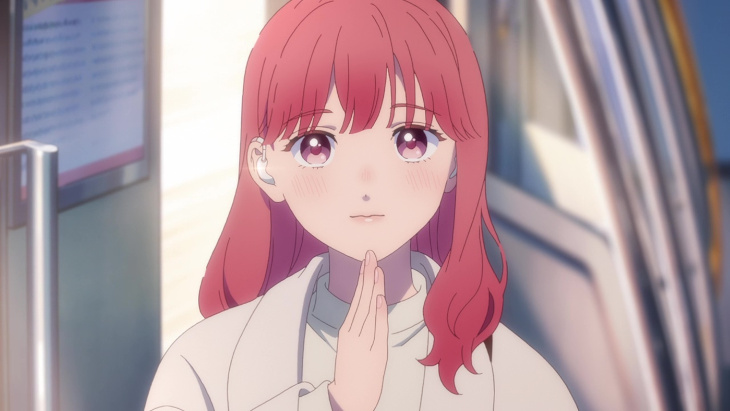
“So this is the world as you see it.”
When I reviewed the shows which premiered this winter, I was largely underwhelmed by the lineup. Even the big new title of the season which had grabbed everyone’s attention, Dungeon Meshi, didn’t succeed in capturing my interest. Fortunately, there was one little exception that was a consistent delight.
A Sign of Affection offered its viewers a romance that strayed from anime norms in two key ways. The first, and most obvious, was its decision to focus on a character with a hearing disability. That alone introduces compelling drama and challenges for our lead, while improving visibility for the deaf community.
However, I can’t stress how great it is to watch a compelling romance featuring characters who aren’t in high school. I have nothing against high school dramas, but they’ve certainly flooded the anime market, and any opportunity to branch outside of that narrow scope is welcome. A Sign of Affection is a warm hug of an anime, and anyone who enjoys romance should check it out.
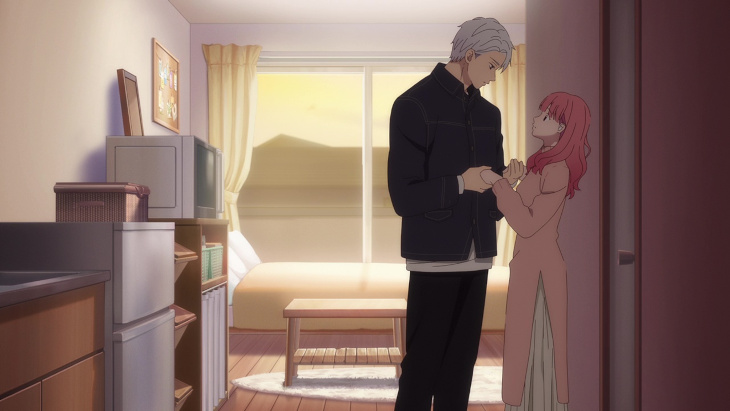
The series centers on the primary pairing of Yuki and Itsuomi, a pair of college students who encounter one another on the train one day. Yuki is shy and withdrawn due in part to her difficulty communicating with others. Yuki has been deaf since birth, and spent much of her upbringing in a school for the deaf. As such, she only has a handful of friends who can hear. Itsuomi is the inverse, a polyglot who appears oblivious to personal boundaries.
While watching this show, there was a line from Good Will Hunting that I kept returning to. Neither character is perfect by any means, but “the question is: whether or not [they]’re perfect for each other.” Yuki needs someone willing to take deliberate measures to enter her world, and Itsuomi needs someone who perceives the world in a radically different way. One of the primary themes of the series is finding new horizons to explore, and seeing how our protagonists expand each other’s view was a weekly delight.
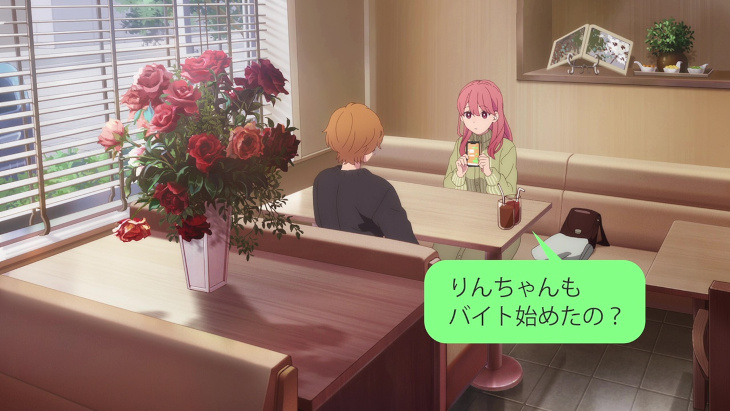
The surrounding cast face similar challenges in breaking through their respective barriers. If there is one element of the show that feels a bit fake, it’s that none of the characters in the cast start the show in a committed relationship. All of them are pining away for someone else, and it occasionally lends a sense of artificiality to the drama. You could plot out the crushes on a flow chart, and it gets a little laughable, though the wholesome tone of the show prevents it from becoming too distracting.
Plus, each of the characters are compelling in their own way. Yuki’s best friend, Rin, has been struggling to confess to her crush for a while and keeps coming up with excuses to visit him. Yuki’s friend from childhood, Oshi, has always loved her, but put up a rough exterior and served as her gatekeeper because he was scared of getting hurt. Ema has been in love with Itsuomi since they were in high school, but is unwilling to look elsewhere. The list goes on. Some are more defined and detailed than others, but it’s rewarding to gradually see this cast expose themselves to new experiences. While it doesn’t reach the same high watermark of quality, A Sign of Affection bears some similarities to Horimiya in how it looks beyond its central couple. That’s never a bad show to have commonalities with.
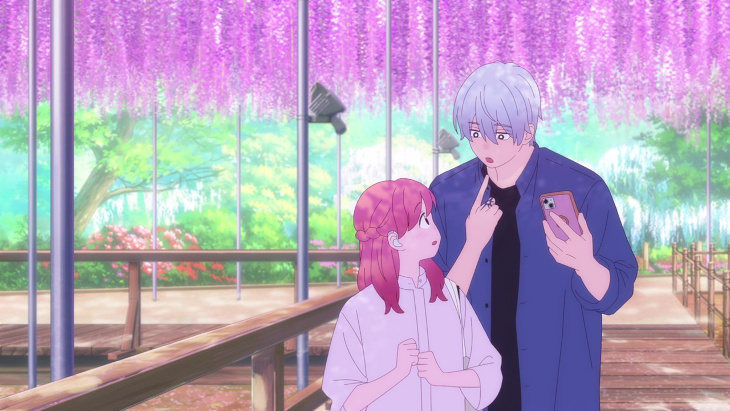
This was a production by Ajia-do Animation Works. The last time I saw an anime from them, it was 2021’s Kemono Jihen. This isn’t surprising, since they only put out a single show between that and A Sign of Affection. Still, the production remains as evocative as one might hope, given their work on Kemono Jihen.
I commented in my previous First Impressions review that I found the male character designs distracting, but that I’d probably get over it as time went on. Those design quirks continued to nag for a few episodes, but I gradually ceased noticing them. So, if you find the aesthetics distracting, I recommend you stick with the show. If you’re anything like me, the oddities of the character models will become less obtrusive with time.
The show’s OST tends to take a backseat to the visuals, but it’s better than I was ready to give it credit for. The tracks may not stand out in my memory, but the moment they’re pulled up, I instantly recognize them. This is true of the OP as well, which is a pleasant, if lowkey, track. It does a good job of capturing the tone of the show, but I suspect I’ll remember the show much longer than I’ll recall the OP.
Before I wrap up, a few Notes and Nitpicks:
- I know this review is a week late, but I prioritized all the two-cour shows I’d been watching. I probably won’t get a chance to review Shangri-La Frontier, since there is no gap between its end and the new season’s beginning, but we’ll see.
- The manga is still ongoing, and there is plenty about the ending of the anime that could be seen as unresolved, but the show did pick a good point to halt things. It serves as a nice conclusion to this chapter of the characters’ lives, and if it doesn’t get a sequel, I think this is a satisfying ending. I would like to see it get a sequel, though.
- I will remind viewers who think this might be a good way to learn sign language that different countries use different sign languages, even when they sometimes share the same root language. If you’re interested in learning JSL specifically, then this might be a good show to reference, but, from what I understand, JSL is a notably distinctive form of sign language.
- I like the tip Itsuomi gives about mirroring phrases when watching subtitled works. As someone who has studied Japanese, but isn’t remotely fluent, it is a good way to exercise the skill.
- For the record, A Sign of Affection wasn’t the only show from the winter anime season I watched past the premiere. I also checked out a few episodes of Hokkaido Gals are Super Adorable!, but dropped it when I realized I was mainly watching it because it reminded me slightly of My Dress-Up Darling.
A Sign of Affection is a wonderful romance series and a delightful instance of disability representation. I absolutely recommend giving it a chance.

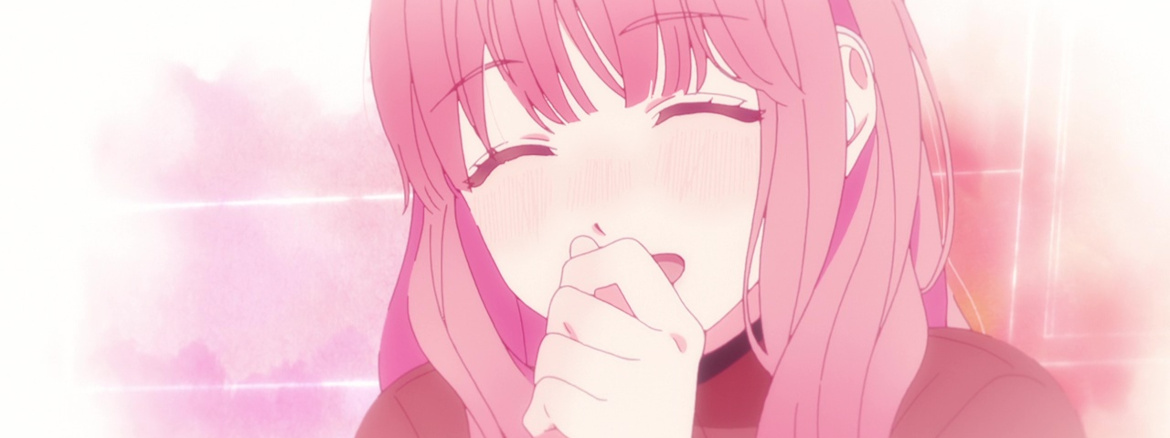



Add comment